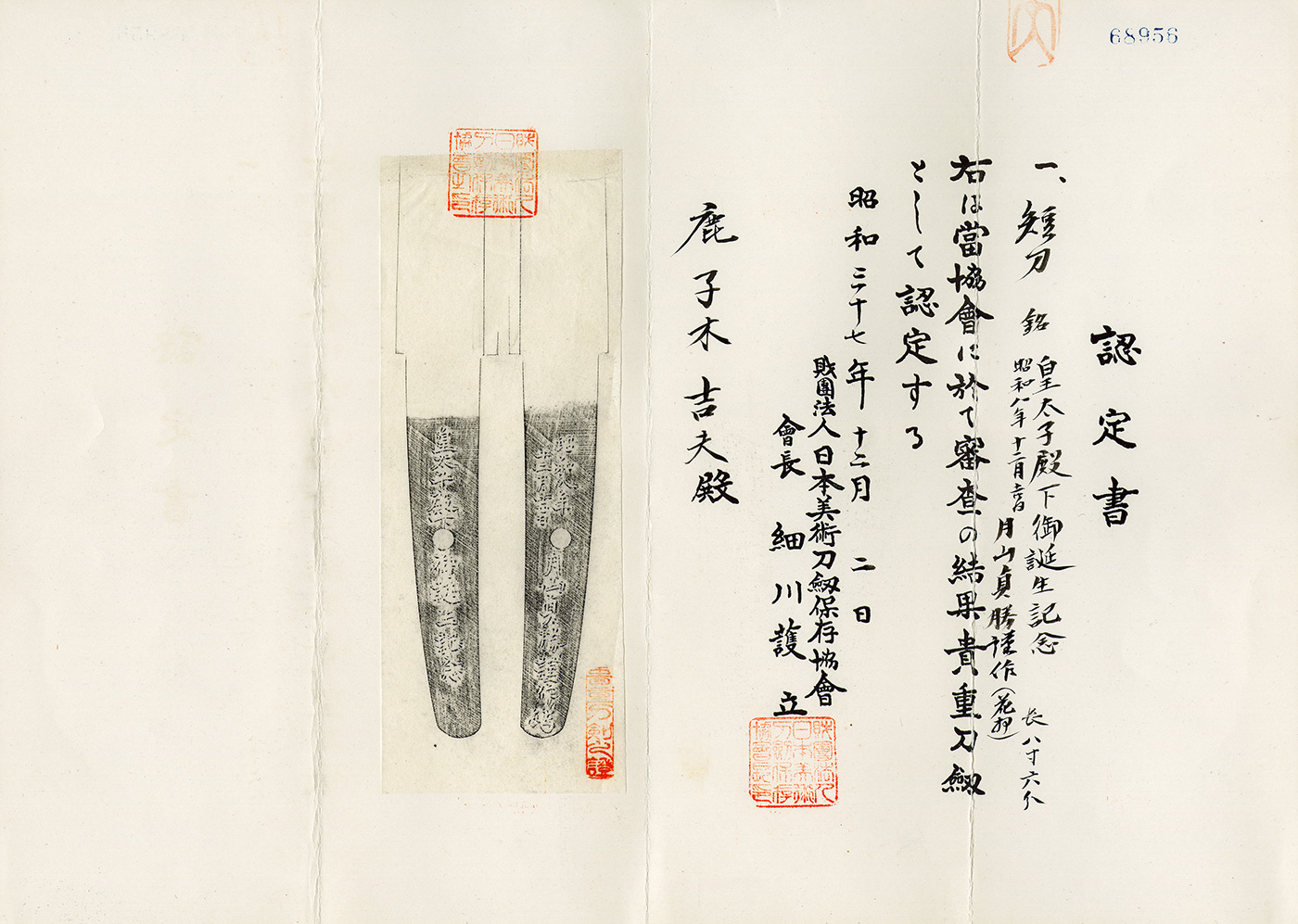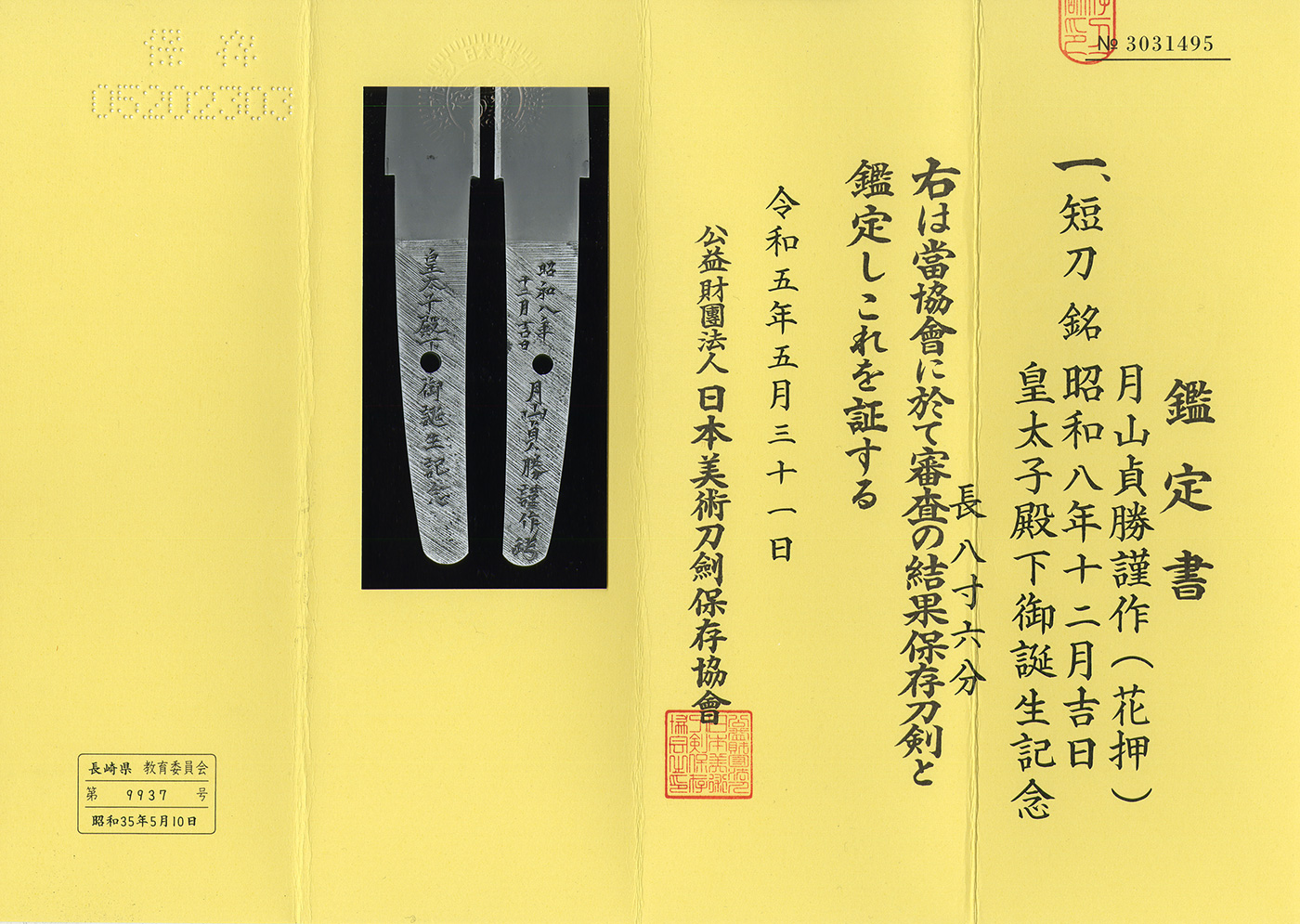Ordering number: 22709
Tanto In Shirasaya in Box(NBTHK Hozon Token)
Inscription (Mei): Kōtaishi Denka Go Tanjō Kinen
Shōwa Hachi Nen Jūni Gatsu Kichijitsu Gassan Sadakatsu Tatemakoto
Writing on Box(translation): 1 Tanto for celebration of the birth of Crown Prince. This piece was passed down from ancestors. Made by the secret skill of Ayasugi-hada. Length- 8 Sun 5 Bu. Written by Gassan Sadakatsu on a lucky day in December of Showa 8.(With Kao)
We categorize our swordsmiths’ works as Juyo-saku (highest quality), Jojo-saku (excellent), Jo-saku (good), and Futsu-saku (average). This piece is ranked as Jo-saku, indicating it is of good quality.
Polished
Habaki: Double gold-foiled Gassan habaki.
Blade Length: 26.0 centimeters or 10.24 inches
Curvature: None
Mekugi-ana (peg hole): 1
Width at the Base: 2.56 centimeters or 1.01 inches
Thickness: 0.53 centimeters or 0.21 inches
Weight: 165 grams
Era: Shōwa 8 Nen (December 1933)
Shape: This tanto has a slightly broad and triangular shape with a remaining Ububa(initial sharp edge), creating a well-balanced piece.
Jigane (forging pattern): The jigane beautifully exhibits Ayasugi hada, which has been a closely guarded secret technique passed down within the Gassan family.
Hamon (temper pattern): The hamon is a straight yakiba (temper line) with a round turn back (maru kaeri).
Characteristics: Gassan Sadakatsu was the son of Gassan Sadakazu and trained under his father for a long time. The practice of engraving his father’s mei began around Meiji 31 (1898) when Sadakazu became elderly. Around Taisho 5 (1916), Sadakatsu began signing his own works.
A Word from Aoi Art: During the Taisho period, naval and army officers ranked above second lieutenant required their own swords, leading to a significant increase in sword production. This piece was crafted in celebration of the birth of the then Crown Prince, Emperor Akihito (currently the Emperor Emeritus). The blade was made from Ayasugi wood grain, a rare and unique technique. The method of producing Ayasugi hada had been lost since the Muromachi period, but the previous generation, Gassan Sadakazu, successfully revived it and kept it as a secret technique within the Gassan family. The craftsmanship of this Ayasugi wood grain is highly challenging, and such works are rarely seen in modern swords. It reflects the peaceful and leisurely times of pre-war Japan. We highly recommend this exceptional piece.
NBTHK Hozon Token paper(*the paper will be issued later)
Aoi Art estimation paper: whole Oshigata by Ayaka Tsuruta





